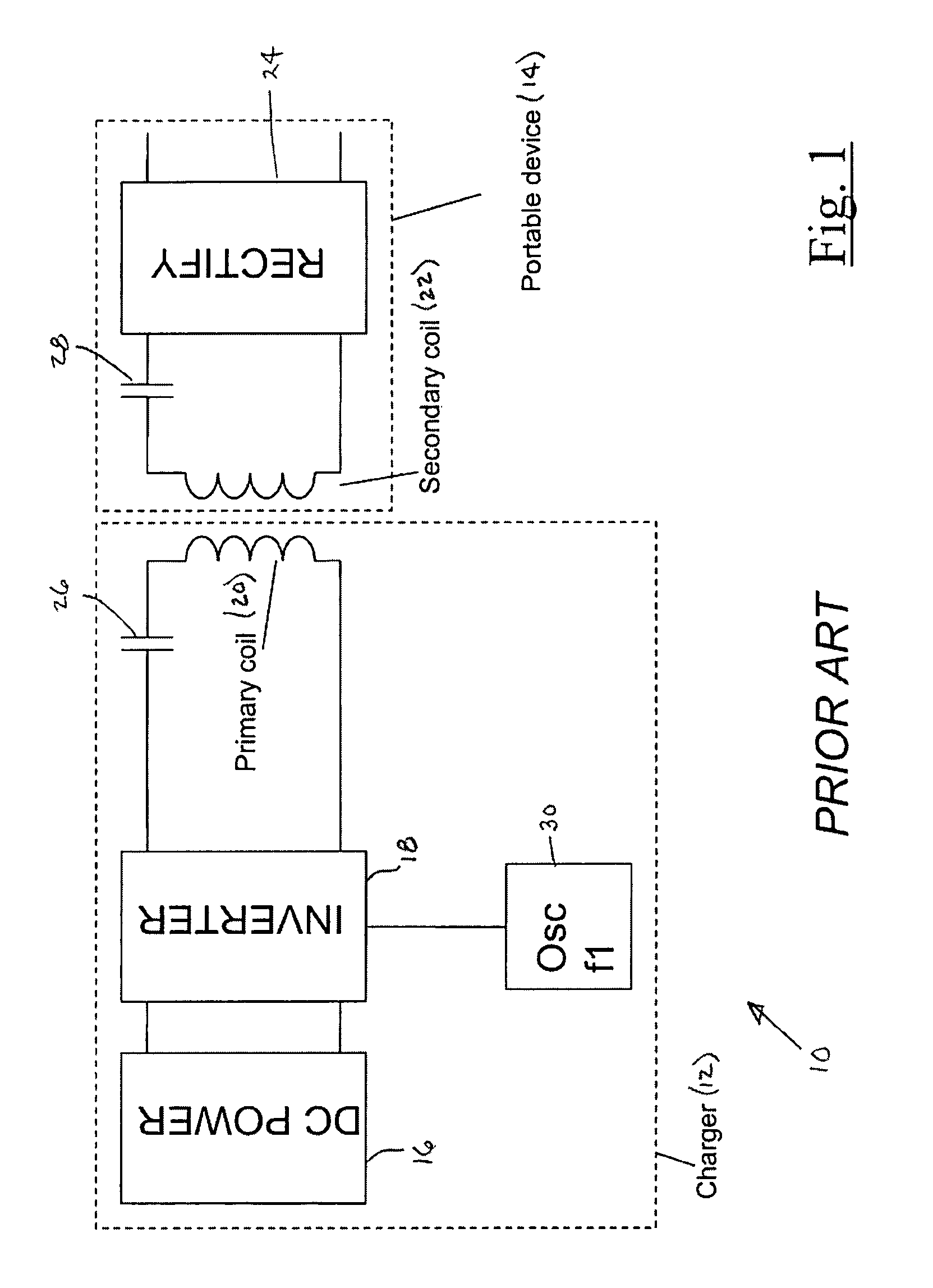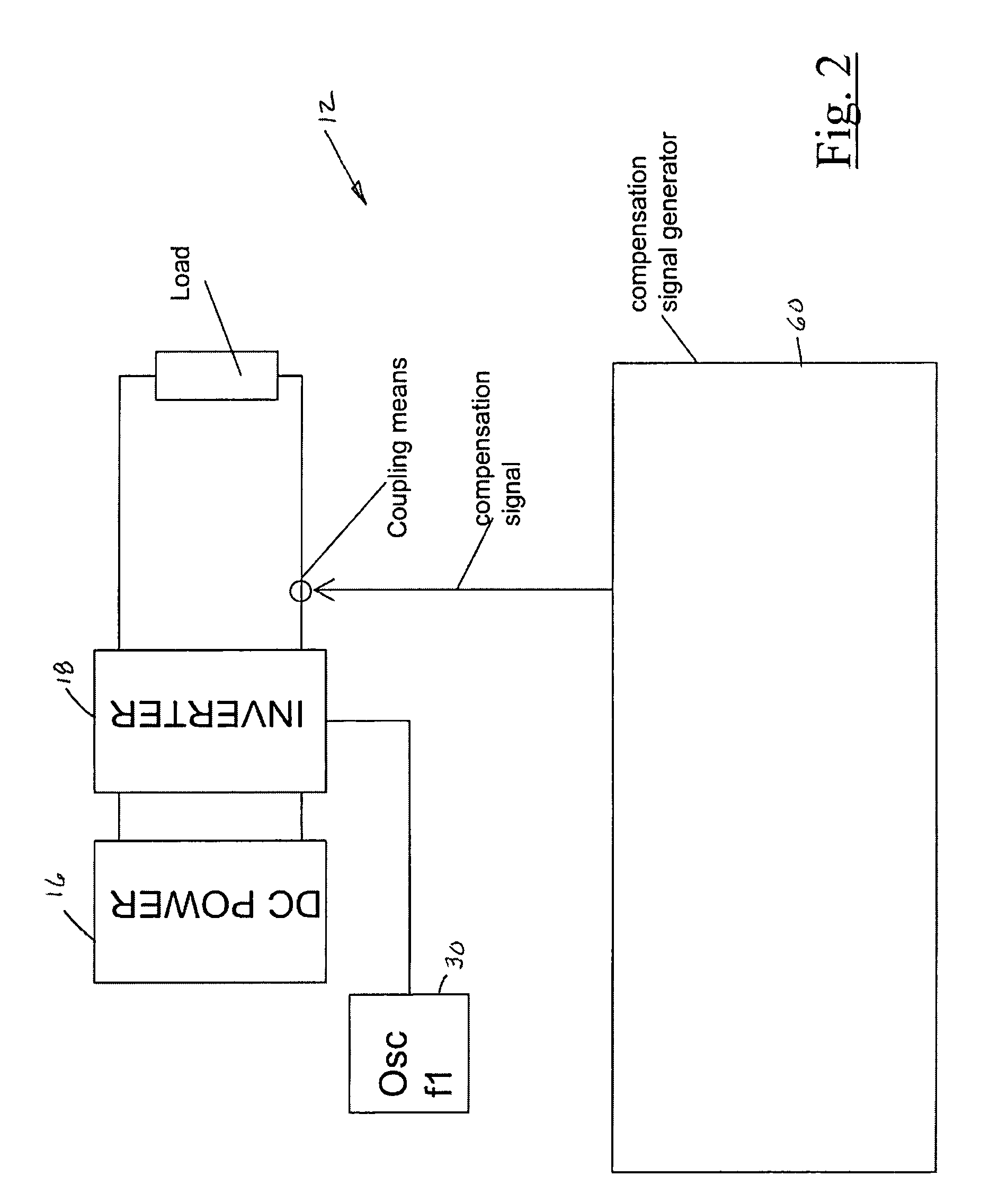Power system
a power transfer system and wireless technology, applied in the direction of dynamo-electric converter control, ac network to reduce harmonics/ripples, instruments, etc., can solve the problems of requiring rectifiers in portable devices, unwanted interference, exacerbate the situation, etc., and achieve the effect of reducing the spurious tones generated by such a driver circuit and avoiding interferen
- Summary
- Abstract
- Description
- Claims
- Application Information
AI Technical Summary
Benefits of technology
Problems solved by technology
Method used
Image
Examples
sixth embodiment
[0099]FIG. 11 shows what is known as the invention, which is a system for reducing the magnitude of the distortion components present in the primary coil 20. An inverter 18 is used to drive a primary coil 20 with a rectangular signal. The signal may be a square-wave signal or it may be a pulse-width modulated signal in which the duty cycle is varied to vary the amplitude of the signal applied to the primary coil. The inverter 18 is driven by a reference oscillator 30 at frequency f1.
[0100]In series with the primary coil 20 is a capacitor 26 such that the combination is resonant at f1 when the secondary load is present. Also in series with the coil 20 is a sense transformer 32 and an injection transformer 34.
[0101]The sense transformer 32 typically has one turn on the primary coil side and 20 to 50 turns on the other side in order to present minimal impedance in the primary coil circuit. The sense transformer 32 is used to measure the harmonic distortion present on the primary coil 2...
first embodiment
[0109]FIG. 6 shows what is known as the invention—and currently the preferred embodiment—in which the compensation is performed digitally. In this system the main primary and secondary circuits are the same as previously described, and they use the same sense and injection transformers. However, in this arrangement, the compensation signal is generated digitally. A digital compensation circuit (DCC) or unit 62 is used, which is clocked at a higher frequency than f1. For instance, f1 may be at 100 kHz; and the clock frequency of the digital compensation circuit may be 100 MHz. This may be implemented as an ASIC, an FPGA, a microprocessor, or a digital signal processor (DSP). Typically this device can process numbers using fixed point arithmetic, though floating point devices are also available. The DCC 62 takes the reference oscillator 30 as an input. This is sampled with a sample and hold amplifier 64 and used to generate the discrete tones digitally. There are many algorithms for g...
second embodiment
[0112]FIG. 7 what is known as the invention. This embodiment is a digital implementation of the FIG. 6 embodiment. Instead of using a tapped delay line filter, each harmonic is sensed individually. If the system is linear, then each harmonic can be adjusted individually. It should therefore be simpler to adjust the system to nullify each harmonic. The FIG. 7 embodiment works well when the system is linear. The FIG. 6 embodiment likely works better when the system is nonlinear because the harmonics are interrelated.
PUM
 Login to View More
Login to View More Abstract
Description
Claims
Application Information
 Login to View More
Login to View More - R&D
- Intellectual Property
- Life Sciences
- Materials
- Tech Scout
- Unparalleled Data Quality
- Higher Quality Content
- 60% Fewer Hallucinations
Browse by: Latest US Patents, China's latest patents, Technical Efficacy Thesaurus, Application Domain, Technology Topic, Popular Technical Reports.
© 2025 PatSnap. All rights reserved.Legal|Privacy policy|Modern Slavery Act Transparency Statement|Sitemap|About US| Contact US: help@patsnap.com



